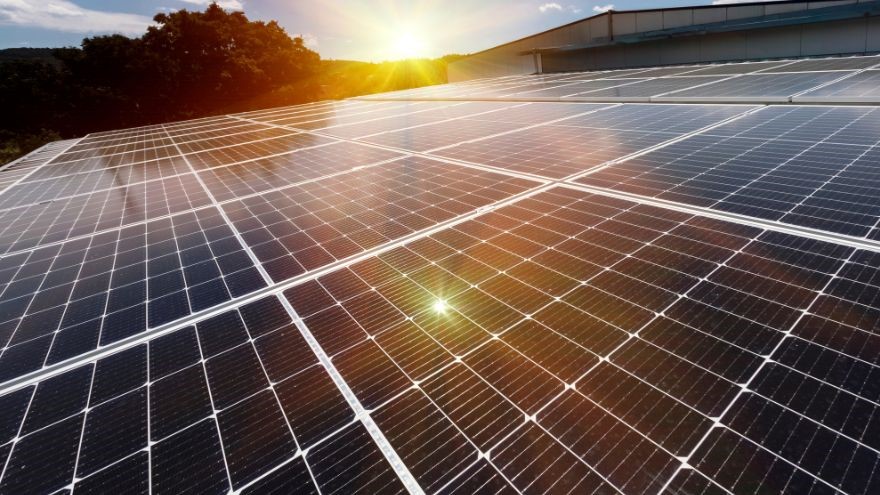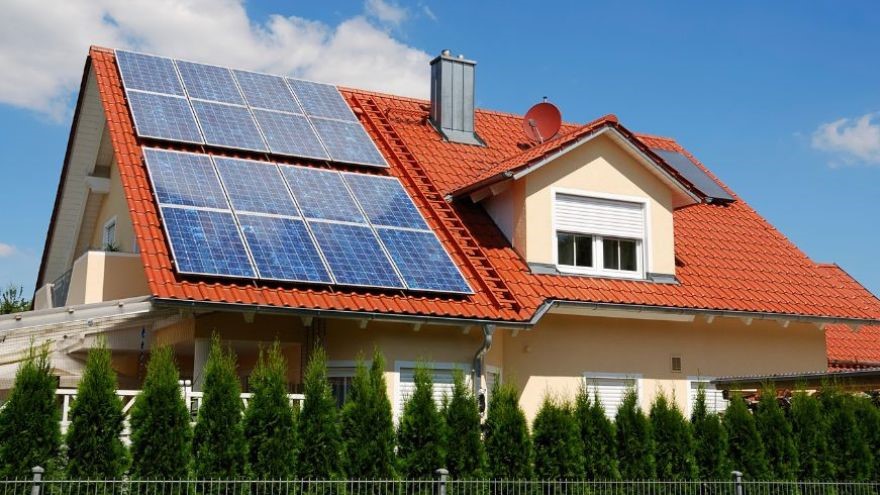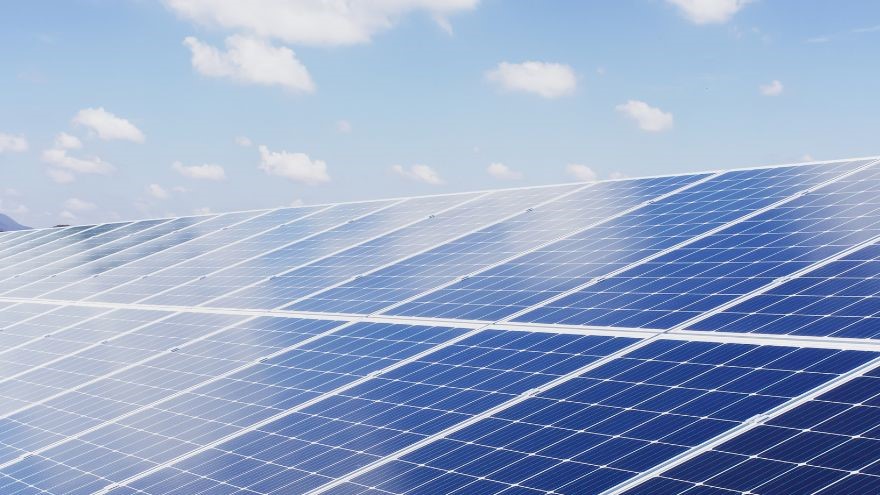In 2022, the rules for settling electricity produced by prosumer photovoltaic installations have changed. From now on, the profitability of a photovoltaic installation is closely related to autoconsumption, i.e. the current consumption of electricity. For this reason, it is worth making good use of surplus electricity.

From this article you will learn:
- what is net-billing,
- what is the importance of the size of the photovoltaic installation,
- how to use surplus electricity generated by a photovoltaic installation,
- Which photovoltaic modules should you choose?
What is the net-billing system?
Everyone who installed a photovoltaic installation and connected it to the power grid after April 1, 2022 is covered by the net-billing system . This is a solution that significantly changes the method of accounting for energy introduced into the power system in relation to the net-metering system in use so far. This does not mean, however, that installing photovoltaic panels is not profitable. On the contrary, because skyrocketing electricity prices mean that the payback period for such an investment is getting shorter.
The principles of net-billing were specified in the amendment to the Act of February 20, 2015 on renewable energy sources. Surplus electricity produced must be sold to the grid at the average electricity price prevailing on the wholesale market. However, when a home photovoltaic installation does not produce electricity or produces too little of it, the missing electricity is taken from the public grid at the retail price.
Check out the photovoltaics offer at the Onninen wholesaler
How to properly choose the size of a photovoltaic installation?
 A well-chosen photovoltaic installation will save significant amounts of money previously spent on electricity from the grid. Therefore, it all starts with the proper preparation of the photovoltaic installation project. It is important to calculate exactly how much electricity you use per year. It is also important whether electricity is consumed when the photovoltaic installation is operating. If the greatest electricity consumption occurs at night, then, in accordance with the principles of net-billing, it will be necessary to download it from the network at the retail rate.
A well-chosen photovoltaic installation will save significant amounts of money previously spent on electricity from the grid. Therefore, it all starts with the proper preparation of the photovoltaic installation project. It is important to calculate exactly how much electricity you use per year. It is also important whether electricity is consumed when the photovoltaic installation is operating. If the greatest electricity consumption occurs at night, then, in accordance with the principles of net-billing, it will be necessary to download it from the network at the retail rate.
So far, the most commonly used conversion factor is dividing the annual energy consumption expressed in kWh by 1000. The result obtained in this way shows the power - expressed in kWp - of the installation .
Installing a photovoltaic installation that is too large in relation to the amount of energy consumed is not economically justified. The exception is a situation in which you significantly increase your auto consumption immediately after putting the installation into operation.
How to use the surplus energy produced by a photovoltaic installation?
First of all , it is worth using the surplus to power devices with significant energy consumption . These include air conditioners and heat pumps . The surplus electricity will also be used to produce hot water. This is a way to store energy, because a suitably large tank will allow you to store hot water when photovoltaic cells produce the most energy.
Another solution is a heat storage facility that collects hot water . It is heated using electric heaters or a heat pump when the photovoltaics is working and producing electricity. Later, the heat collected in the tank can support the operation of the central heating. The water collected there can also be used for washing as domestic hot water
During the day, when there is most sunlight, it is worth running devices such as a washing machine, dryer or dishwasher . This is also a good time to charge battery-powered cleaning or mowing robots and any other battery-powered equipment, such as electric scooters and bicycles, and even - if possible - cars, although the latter are usually in use during the day.
Energy storage is also an interesting solution. The surplus of energy generated using photovoltaic panels is first directed to such a storage facility, and only after it is completely filled is it transferred to the power grid. When photovoltaic modules stop converting solar energy into electricity, the energy necessary to power the devices will come from the energy storage. Only when its resources are exhausted will power be supplied from the external power grid. This solution is advantageous because 1 kWh of energy from the grid is more expensive than that produced by a photovoltaic installation.
 The highest self-consumption rate, and therefore the highest profitability, is achieved by installations equipped with both energy storage and devices managing energy consumption , i.e. controlling the switching on of receivers based on the analysis of the current production by the installation. It is worth adding that by building such an extensive installation, we not only reduce the costs of purchasing electricity, but also obtain the opportunity to receive funding for the installation of PLN 20,500 , in accordance with the principles set out in the Moje Prąd 4.0 program.
The highest self-consumption rate, and therefore the highest profitability, is achieved by installations equipped with both energy storage and devices managing energy consumption , i.e. controlling the switching on of receivers based on the analysis of the current production by the installation. It is worth adding that by building such an extensive installation, we not only reduce the costs of purchasing electricity, but also obtain the opportunity to receive funding for the installation of PLN 20,500 , in accordance with the principles set out in the Moje Prąd 4.0 program.
Which photovoltaic panels are worth investing in?
When producing energy, the way the panels are arranged is very important. Most often, they are installed facing south, but some photovoltaic installations are placed in an east-west position. In addition to the direction, the quality of photovoltaic modules is extremely important, determined by their efficiency, i.e. the ratio of the ability to convert solar energy into electricity. To achieve high savings and enjoy the reliability of the entire system, it is worth investing in proven solutions - low energy expenses will pay off more in the long run than buying the cheapest components .
Photovoltaic panels in the Onninen offer
Onninen's offer includes JA Solar photovoltaic modules, which differ in dimensions and power, and therefore also in power. See our proposals and choose a model of photovoltaic panels tailored to your needs.
- The JA Solar JAM54S31-395/MR_FB photovoltaic module has dimensions of 1.722 x 1.134 x 0.03 m, power: 395 Wp and weighs 21.5 kg. This is a full black model, composed of monocrystalline photovoltaic cells placed on a black substrate. They are characterized by the highest efficiency of all types of cells.
- The JA Solar JAM72S20-460/MR_BF Photovoltaic Module is characterized by high power with an intermediate size. It uses half-cell technology, which is characterized by lower internal resistance compared to panels based on classic construction. The module has dimensions: 2.112 x 1.052 x 0.035 m, weighs 24.5 kg and has a power of 460 Wp.
- The JA Solar JAM72S30 545 photovoltaic panel is the best option for ground installations. Of all the proposed products, it has the largest dimensions: 2.279 x 1.134 x 0.035 m and power: 545 Wp. The panel weighs 28.6 kg.
Check out the full offer of photovoltaics at the Onninen wholesaler